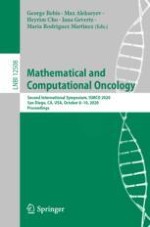2020 | Book
Mathematical and Computational Oncology
Second International Symposium, ISMCO 2020, San Diego, CA, USA, October 8–10, 2020, Proceedings
Editors: George Bebis, Dr. Max Alekseyev, Heyrim Cho, Dr. Jana Gevertz, Maria Rodriguez Martinez
Publisher: Springer International Publishing
Book Series : Lecture Notes in Computer Science
